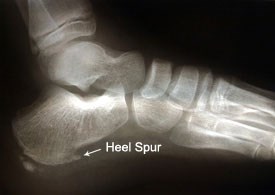Podiatry Services for Fort Walton Beach and Niceville FL
Many podiatric conditions can be treated in our office under the care of our Podiatrist Paul J. Kalin, DPM and our exceptional staff. In some cases, surgery will be performed at a hospital. Foot conditions involving damage to underlying tissues are best treated with surgery. Conditions involving a change in the conformation of the foot or toes are also amenable to correction with surgery. Podiatrists are specially trained in the use of a variety of surgical techniques to address these problems, to minimize pain and to prevent the loss of function of any part of the foot. Podiatrists are also familiar with all available treatment options to determine when surgery is necessary, and when it can be avoided.

Plantar Fasciitis
Plantar fasciitis is one of the most common orthopedic conditions relating to the foot. It is when the thick tissue on the bottom of the foot (the plantar fascia) becomes inflamed and irritated, making it difficult to walk. This is most often the result of repeated episodes of minor but recurring injury, such as with frequent running or long periods of standing. The pain can be located in the heel area of the foot or in the arch. It is often worse in the morning due to stiffness of the tissue, and also becomes worse after long periods of walking. The pain often decreases with rest.
Diagnosis:
Your podiatrist will exam your foot for swelling, redness and tenderness of the area. X-rays may be taken.
Treatment:
Initial treatment usually involves heel stretching exercises, night splints or shoe inserts. Anti-inflammatory medications may also be given. Treatment can span several months to two years before symptoms improve. Most patients will see an improvement within one year. Further treatment may include steroid injections into the sole of the foot, or in certain situations a surgical procedure that releases the plantar fascia.
Without Treatment:
Foot pain can continue, and progress into a severe condition that affects the ability to walk. Eventually, permanent damage to the plantar fascia or surrounding nerves may occur.

Heel Spur
A heel spur is an extension of the heel bone that extends into the tissue directly in front of the heel. It is most often a result of chronic plantar fasciitis.
Diagnosis:
A heel spur can be seen on an X-ray as an extension of bone in front of the heel.
Treatment:
Treatment of a heel spur involves treatment of plantar fasciitis. It includes stretching exercises, possibly the use of a splint, or anti-inflammatory medications. In some cases a steroid injection is given directly in front of the heel.
Without Treatment:
The pain due to the plantar fasciitis that causes the heel spur can become progressively more severe, in some cases damaging the tissue.
Service Policy
Please call (850)863-1238
